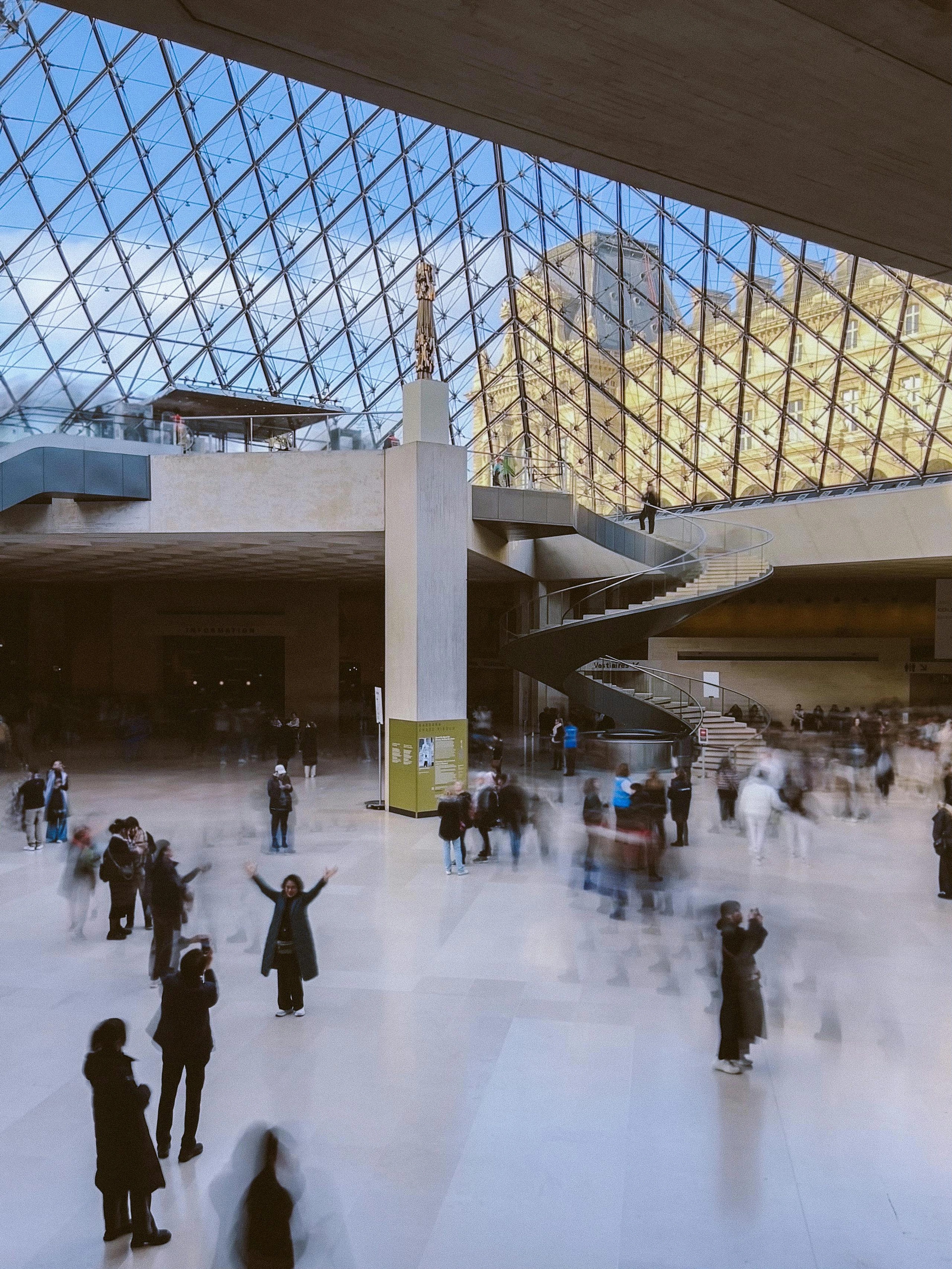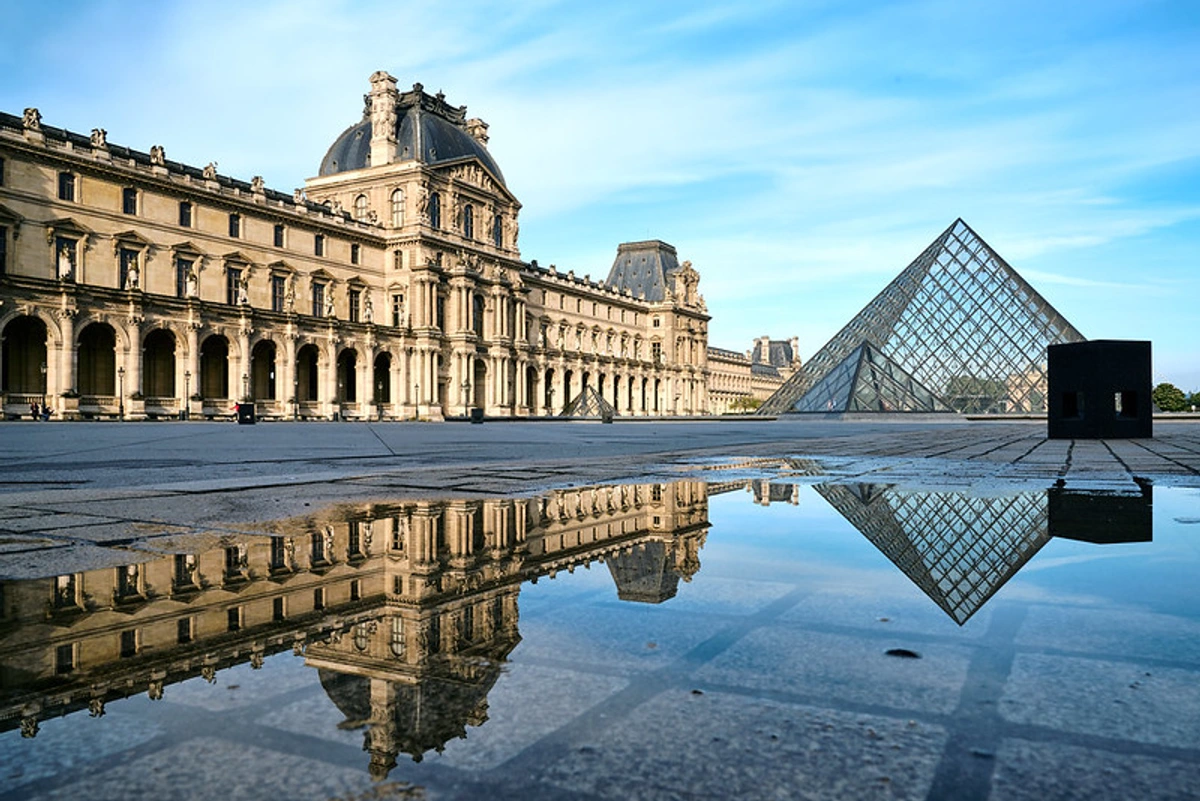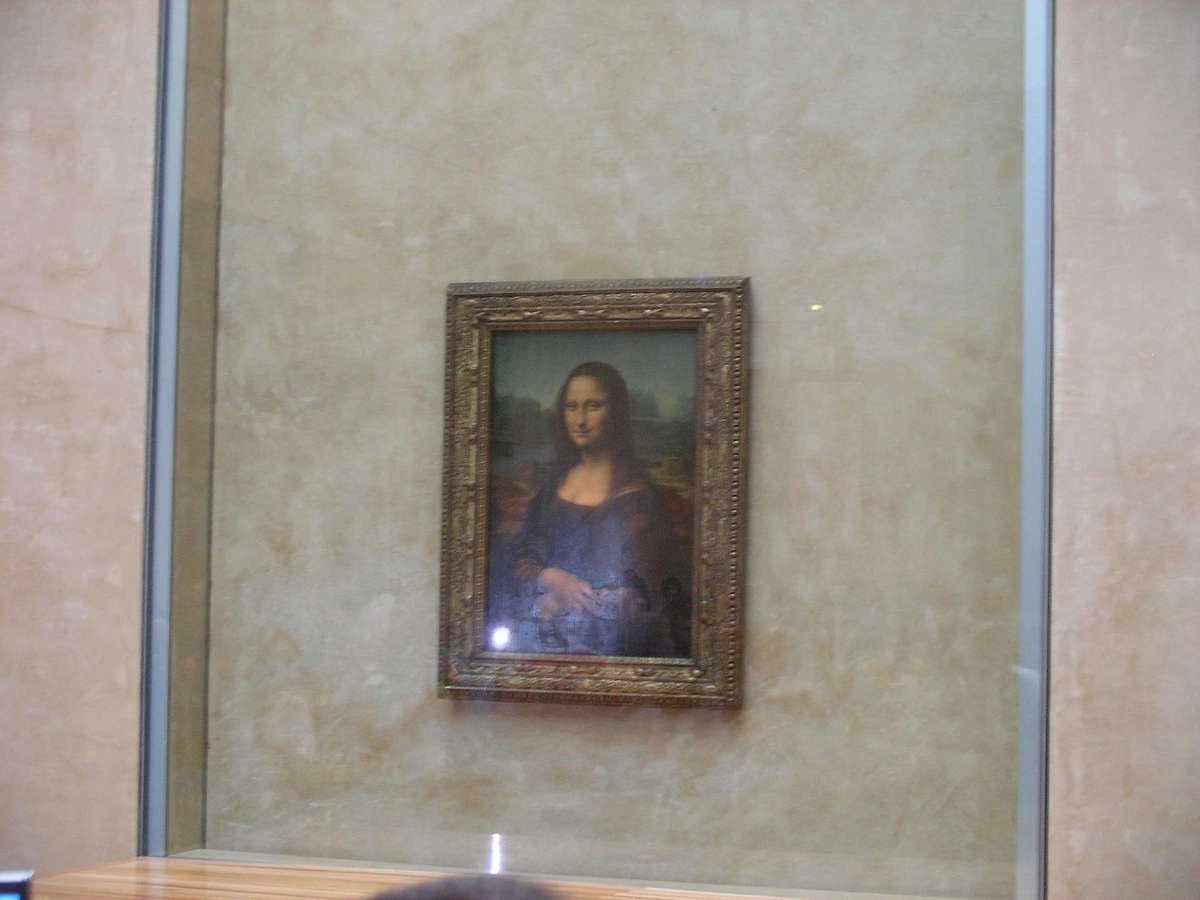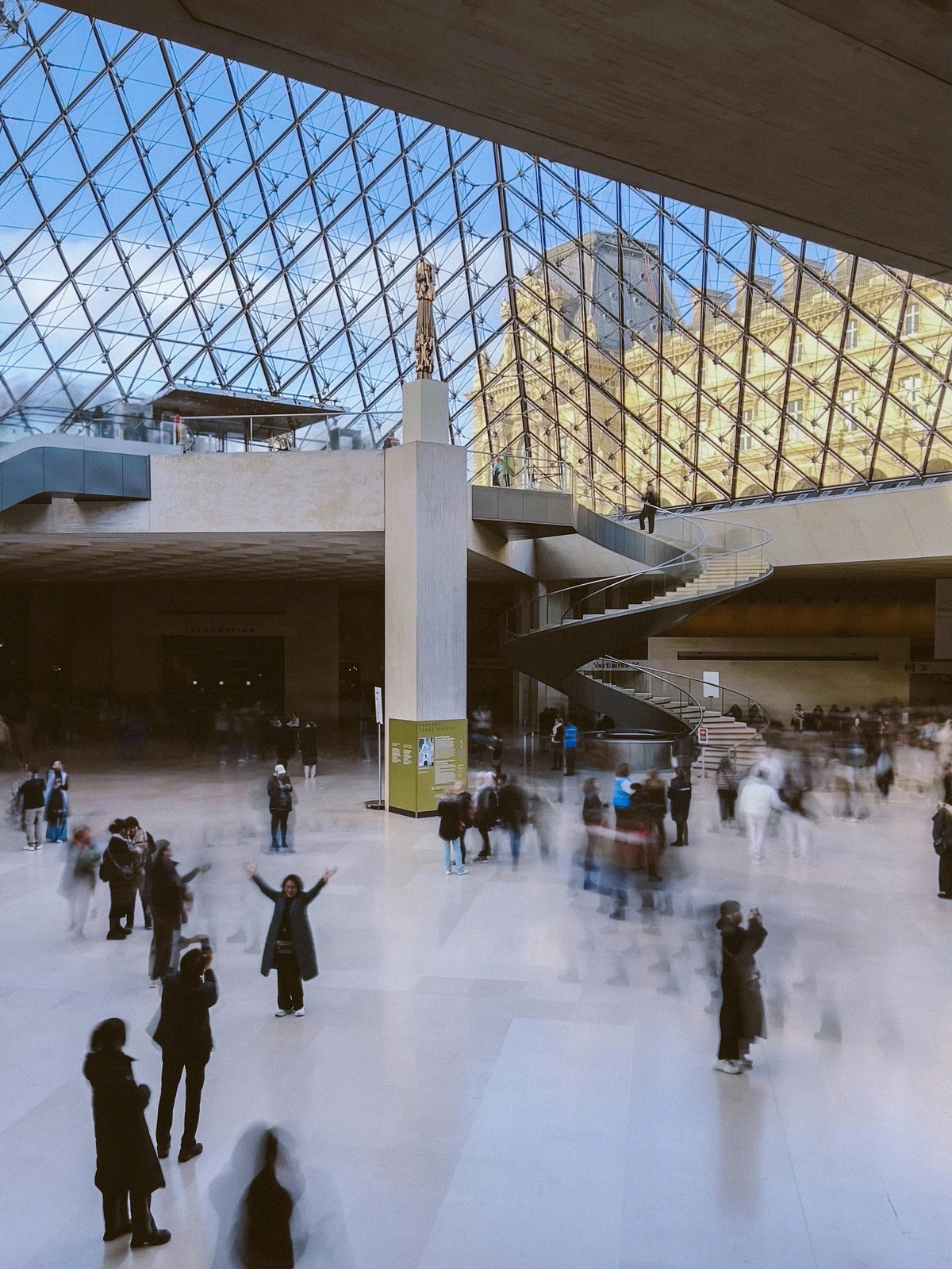
First-Timer's Guide to the Louvre: Navigate Paris's Grand Art Labyrinth with Confidence
Feeling overwhelmed by the Louvre? This first-timer's guide blends personal stories with practical tips to help you navigate Paris's grand art labyrinth, discover iconic masterpieces, and find your own hidden gems for a truly unforgettable visit.
The Louvre for First-Timers: Unlocking Paris's Grand Art Labyrinth with Personal Insight
Let's be honest, stepping into the Louvre for the very first time can feel a bit like entering a beautiful, overwhelming labyrinth. I vividly remember my initial visit, standing under that iconic glass pyramid, feeling a profound mix of awe and utter bewilderment. Where do you even begin when faced with so much history, so much art, and, let's not forget, so many people? It's enough to make you want to retreat to the nearest Parisian cafe, perhaps contemplating the subtle artistic drama of a spilled croissant from a safe distance. But trust me, with a little planning and the right mindset, your first Louvre experience can be truly magical, not just a dizzying dash for the Mona Lisa. This guide aims to cut through the noise, helping you navigate that grand art labyrinth. I'm offering a blend of practical advice and personal insights to make your visit truly unforgettable, highlighting both the undisputed masterpieces and my own cherished hidden gems.
Because once that initial awe subsides, trust me, it's all too easy to feel lost again without a solid plan. A good plan, though, will transform potential chaos into curated wonder. So, expect personal stories, practical tips, and a roadmap to finding your own connection with art, all wrapped up in this guide.

Image credit: Wikimedia Commons, License: CC BY-SA 4.0
From Royal Palace to Public Treasure: The Louvre's Enduring Story
Before we dive into the art, it's worth taking a moment to appreciate the building itself, because the Louvre is a living timeline. Beneath the grand courtyards and neoclassical facades, you can still trace the formidable walls and moats of a 12th-century medieval fortress, built by King Philip II Augustus to protect Paris. Over the centuries, it was systematically expanded and transformed, with Renaissance flourishes under Francis I, vast additions by Catherine de' Medici, and the grand schemes of Louis XIII and XIV. Architects like Louis Le Vau and Jules Hardouin-Mansart added their Baroque brilliance, culminating in the magnificent palace we see today. Walking through its halls, you're not just in a museum; you're inside a monument to French history, each stone whispering tales of kings, revolutions, and artistic ambition.
Indeed, the Louvre isn't just a museum; it was a royal palace, the opulent residence of French kings for centuries. What's truly fascinating, though, is its transformation. During the tumultuous French Revolution, specifically on August 10, 1793, the Musée Central des Arts (as it was then known) was thrown open to the public. It was a revolutionary act, deeply rooted in Enlightenment ideals championed by thinkers like Diderot and Rousseau, transforming it from a symbol of royal power into a beacon of national heritage, open to all citizens. This very spirit of universal access continues today, underpinning the museum's vast educational initiatives and public engagement. This mission was further solidified during the Napoleonic era, when Napoleon Bonaparte's campaigns brought a wealth of European masterpieces to Paris, significantly expanding the museum's collection and cementing its status as a world-class institution. And it's this dedicated work in art conservation and research that directly benefits us, the visitors, ensuring that these delicate, centuries-old treasures are carefully preserved and restored, allowing us to connect with their incredible stories for generations to come.
That means grand halls, endless corridors, and frankly, enough art to fill a lifetime – a thought that initially overwhelmed me, but now I find rather liberating. My biggest piece of advice, and something I wish I'd embraced sooner, is this: you cannot see everything. And trying to will only lead to exhaustion and probably a grumpy mood. Instead, treat it like an art buffet. Pick your favorites, savor them, and accept that you'll leave plenty for another visit. It's perfectly okay to focus on a handful of masterpieces rather than sprinting past thousands of incredible works.
Your Art Expedition: Prioritizing Your Must-Sees
Now that we've journeyed through the Louvre's storied past, let's turn our attention to the art itself, and how to best approach its vast treasures. So, with the understanding that you can't conquer it all, how do you choose what to focus on? Well, most first-timers have a mental checklist, and mine was no different. Think of it like a carefully curated art buffet where you select your absolute must-haves. This section outlines the undisputed heavyweights that probably brought you here too, along with a few personal tips for each, based on my own adventures – because who wants to feel rushed through history?
The Mona Lisa (La Gioconda)
Ah, the enigmatic smile. I'm not gonna lie, seeing the Mona Lisa is an experience in itself, but perhaps not for the reasons you expect. It's smaller than you think, behind bulletproof glass, and almost always surrounded by a buzzing crowd, all vying for that perfect selfie. My tip? Manage your expectations. Appreciate it for what it is – a masterpiece with an incredible history that includes a famous theft in 1911 that only amplified its mystique, turning it into a global phenomenon. Beyond the drama, its fame also stems from Leonardo's innovative use of sfumato – a subtle blending of colors to create soft, hazy transitions, giving her expression that captivating, enigmatic quality. Art historians and psychologists still debate the psychological nuances of her smile, some suggesting it shifts with your gaze, adding to its timeless appeal. Take your moment, then move on to enjoy other, equally breathtaking (and less mobbed) works. Sometimes, I find myself more moved by the sheer devotion of the crowd, the collective human gaze, than by the painting itself.

Image credit: Wikimedia Commons, License: CC BY-SA 4.0
The Winged Victory of Samothrace
This one, for me, is pure triumph. Standing at the top of the Daru staircase, the Winged Victory of Samothrace feels alive. It’s dynamic, powerful, and truly breathtaking. Discovered in fragments on the Greek island of Samothrace in 1863, this magnificent marble statue of Nike, the goddess of victory, was carefully reassembled. Originally, it is believed to have stood on the prow of a ship, commemorating a naval victory, its dramatic drapery conveying movement and the force of the wind. This piece perfectly embodies the Hellenistic artistic period's emphasis on dynamism, emotional intensity, and anatomical realism, all captured in the intricate folds of her garment that suggest a living form. Though her head and arms remain a mystery, standing before her, you can almost feel the wind on her drapery. There’s something about seeing this ancient Greek masterpiece, still commanding attention despite its age, that really makes you feel connected to history. It's often less crowded than the Mona Lisa, allowing for a more reflective moment.

Image credit: Flickr / Carole Raddato, License: CC BY-SA 2.0
Venus de Milo
Another iconic statue, the Venus de Milo, embodies classical beauty and mystery. Discovered on the island of Milos in 1820, this Hellenistic masterpiece immediately captivated the art world. The Hellenistic period (roughly 323-31 BCE) in Greek art often emphasized drama, emotion, and dynamic composition, moving beyond the serene idealism of earlier Classical Greek sculpture. All of these characteristics are beautifully captured in Venus's flowing form, implied movement, and the subtle twist of her torso. Her missing arms only add to her allure, sparking endless conversations and theories about what she might have been holding – a golden apple? A mirror? A shield? The debate continues, making her a wonderful example of how even fragmented art can be incredibly expressive, inviting us to fill in the blanks with our own imagination. It's a powerful reminder that sometimes, what's left unsaid or unseen can be the most compelling part of a story, much like the untold narratives in some abstract art.
The Louvre's Enduring Legacy: Pop Culture and Beyond
These iconic works are certainly magnetic, and for good reason, but the Louvre's magic extends far beyond these celebrated pieces. And it's this immense cultural footprint, both ancient and modern, that cements the Louvre's status as a living icon. Its magnificent halls and distinctive pyramid have featured prominently in countless films, from the thrilling pursuit in The Da Vinci Code to a memorable, whimsical scene in Amélie. It's been the setting for music videos, fashion shoots, and even served as an inspiration for artists creating everything from contemporary prints to abstract paintings, reminding us that art transcends time and medium. This constant cultural presence only deepens its mystique, turning it into more than just a museum—it's a character in its own right in the global narrative.
Exploring Deeper: My Personal Picks & Hidden Gems
Ready to wander a bit and find your own quiet marvels? These are the areas I urge you not to miss, offering breathtaking art and fascinating history, often with a little more breathing room than the superstar galleries. Finding these quieter moments, for me, is often where the real artistic revelation happens, shaping my own sense of inspiration and connection to art. And honestly, discovering your personal masterpieces often comes from letting yourself wander, engaging with pieces you've never heard of, or simply observing. It's an adventure in itself!
Egyptian Antiquities
Mummies, sarcophagi, and hieroglyphs – it’s like stepping into another world entirely. The sheer volume and preservation are astounding, making you feel the weight of millennia. Beyond the grand sarcophagi, seek out the imposing Great Sphinx of Tanis and the incredibly lifelike Seated Scribe, which captures an individual with such personality. This collection also houses artifacts vital to understanding ancient Egypt, including fragments of the Rosetta Stone, whose discovery by Napoleon's expedition and subsequent decipherment by Jean-François Champollion in the 1820s was absolutely monumental. Its decoding didn't just translate ancient texts; it opened a window into millennia of Egyptian history, culture, and religious beliefs that had previously been lost to the world. It reminds me how ancient art can still deeply resonate today, much like how ancient Egyptian art influenced modernism.
Napoleon III Apartments
Talk about opulence! These rooms are a dazzling display of 19th-century luxury. This Second Empire style, prevalent during Napoleon III's reign (1852–1870), was all about showcasing imperial power and a desire for grandeur after political upheaval. It’s characterized by lavish ornamentation, rich colors, and the use of expensive materials like gilded bronze, velvet, and intricate marquetry. Complete with ornate ceilings, shimmering chandeliers, and elaborate furnishings, exploring them feels like stepping onto a theatrical set, a vivid reminder that the Louvre was once home to royalty, not just art. Keep an eye out for the magnificent Salon de la Paix or the opulent Grand Salon; they practically scream extravagance and make my own studio feel, well, rather understated!

Image credit: Pexels / Alexy Mckinley, License: Public Domain
Medieval Louvre
Believe it or not, you can explore the foundations of the medieval fortress that King Philip II Augustus built in the 12th century, right beneath the modern museum. This stronghold once guarded Paris, evolving over centuries before being transformed into a palace. Walking among these ancient stones, you truly feel the incredible layers of history beneath your feet, a tangible connection to the building's deep and varied past. Look closely at the remnants of the moat and the original defensive walls, with their rough-hewn stone and arched doorways, and try to imagine a time when this grand palace was a gritty military outpost.
Italian Renaissance Masterpieces
While the Mona Lisa draws the crowds, don't miss the rich collection of other Italian masters. You'll find breathtaking works by Raphael, such as his sublime Portrait of Baldassare Castiglione, significant for its profound psychological depth, naturalism, and masterful composition, which profoundly influenced later portraiture across Europe. I remember being utterly captivated by its quiet power. You'll also see the dramatic canvases of Titian and Veronese. Veronese's colossal The Wedding Feast at Cana, for instance, is not just immense but a theatrical spectacle of vibrant color and intricate detail, depicting a grand biblical narrative with an almost contemporary social scene, often in much quieter galleries. It's a fantastic place to witness the evolution of artistic storytelling and technique from the Early Renaissance to the High Renaissance.
Dutch & Flemish Wonders
Remember how I mentioned finding incredible Dutch Golden Age paintings by taking a wrong turn? Well, I vividly recall stumbling upon Rembrandt's Bathsheba at Her Bath – its profound emotional depth stopped me in my tracks. The Richelieu wing houses an impressive array of artists like Rembrandt, Vermeer, and Rubens. The Dutch Golden Age (roughly 17th century) is known for its detailed genre scenes, intimate portraits, still lifes, and landscapes, often employing dramatic chiaroscuro (the use of strong contrasts between light and dark) to create emotional resonance and realism in everyday life. For instance, Vermeer's works, though fewer in number, are celebrated for their masterful use of light and serene domestic scenes, drawing you into quiet moments. It’s a different vibe entirely, often more intimate and emotionally resonant, focusing on psychological depth and masterful use of light – a personal favorite if I’m honest, and a fascinating contrast to the grand Italian works.
Intricate Islamic Art
The stunning Cour Visconti houses the Department of Islamic Art, with a breathtaking glass roof that creates an ethereal light, beautifully illuminating the intricate details of the collection. This collection features intricate metalwork, ceramics, textiles, and miniatures spanning 13 centuries and three continents, offering a rich tapestry of Islamic cultures from the Umayyad, Abbasid, Mamluk, and Ottoman periods. It showcases incredible craftsmanship and cultural diversity. Don't miss the exquisite Baptistery of Saint Louis, a masterpiece of Mamluk metalwork that's not only breathtakingly intricate but was later used by French royalty for baptisms, symbolizing a fascinating cultural exchange, or the vibrant Iznik ceramics. Walking through here, I'm always struck by the exquisite precision and spiritual depth woven into every piece.
Opulent Decorative Arts
Tucked away in various wings, the decorative arts collection offers a glimpse into the lavish lifestyles of French royalty and aristocracy. From intricate jewelry and exquisite furniture like the famed commodes by André-Charles Boulle, celebrated for their elaborate marquetry (intricately inlaid patterns of different woods or other materials) and ormolu mounts (gilded bronze ornaments used to protect and adorn furniture, adding a luxurious finish), to elaborate tapestries and delicate Sèvres porcelain, these objects are works of art in themselves. Boulle's revolutionary techniques with marquetry, using brass, tortoiseshell, and exotic woods, elevated furniture making to an art form, influencing European design for centuries. This makes them a fascinating peek behind the velvet ropes of history, and it makes you think about how art permeates every aspect of life, much like how the evolution of art in interior design from grand salons to modern minimalism has shaped our living spaces.
Captivating Sculptures (Beyond the Icons)
While the Winged Victory and Venus de Milo rightly steal the spotlight, the Louvre's sculpture collection is immense and deserves much more attention. You’ll find exquisite examples of Greek, Roman, and later European sculpture, each telling its own powerful story. Don't rush past these powerful and often poignant works that tell their own stories:
- Michelangelo's Dying Slave: A powerful and moving work, this marble statue was originally intended for the monumental tomb of Pope Julius II but found its home here. While this piece is undeniably complete in its serene beauty, Michelangelo famously explored the concept of non-finito in some of his other works, leaving them intentionally unfinished. Here, however, it’s a testament to his versatility and ability to convey a sense of yearning even in a finished form.
- Antonio Canova's Psyche Revived by Cupid's Kiss: This neoclassical masterpiece is pure romanticism in marble, perfectly embodying Neoclassical ideals such as idealized beauty, emotional purity, balanced composition, and a deliberate return to classical themes and forms, characteristic of the late 18th and early 19th centuries. The delicate balance and emotional intensity between Psyche and Cupid are captivating, inviting you to linger and admire the sculptor's incredible skill in rendering soft skin and flowing drapery from hard stone – a truly breathtaking feat.
Beyond the Blockbusters: Cultivating Your Own Louvre Story
While the famous pieces are a powerful draw, I truly believe the most memorable moments often come from unexpected encounters. Take your time. Sit on a bench and simply observe the light, the brushstrokes, the expressions. Watch other visitors and their reactions. Find a quiet corner with a painting you've never heard of and let it speak to you. It's in these moments that you truly connect with the art, far from the madding crowds, allowing your own interpretation to emerge. This quiet engagement, for me, is the essence of art appreciation, and who knows, maybe it'll even inspire you to discover something new for your own walls, bringing that museum magic home and helping you find how to decorate a house with your own treasures. I often find myself sketching ideas in my mind, or even taking mental notes on color palettes and compositional choices that I might later weave into my own artistic journey as an artist. After all, every visit is a unique chapter in your personal art journey.

Image credit: Zenmuseum, License: Public Domain
Practicalities: Making Your Visit as Smooth as Silk
So, with a mental map of artistic wonders in mind, let's talk logistics. Because a good plan makes all the difference in turning a potentially overwhelming day into a truly enjoyable one, rather than a frustrating queue-filled marathon (been there, done that, never again!). And remember, sometimes even the smallest details, like knowing where to find a quiet corner, can make or break your museum experience, much like a well-chosen frame can elevate a piece of art. It’s all part of designing your ideal journey, echoing my own artistic journey and how I let creative exploration guide me.
Tickets: Your Golden Key
Buy online, in advance, and pick a time slot. Seriously, this is non-negotiable if you want to avoid soul-crushing queues. I made the mistake of not doing this once, and let's just say my feet hated me before I even got inside – a story for another time, perhaps, but a lesson learned the hard way! Head to the official Louvre website and secure your entry; it’s the smart move. Be prepared for mandatory security checks before entry, which are thorough and can add a few extra minutes to your arrival, even with timed tickets. Also, be aware that some tickets might have additional booking fees or offer access to temporary exhibitions, so always check the details.
Getting There: Metro is Your Friend
The Palais Royal - Musée du Louvre (Lines 1 and 7) metro station drops you right at the doorstep. It’s efficient, straightforward, and my go-to for getting around Paris. And while you're traveling, remember that the Louvre itself is a grand Parisian landmark, often visible from many vantage points, adding to the city's iconic skyline.
Navigating the Labyrinth: Embrace the Unexpected
Grab a map as soon as you enter, or download one to your phone. The signage inside is decent, but the sheer scale can still confuse. Sometimes, though, getting a little lost leads to wonderful discoveries – I speak from experience! I found some incredible Dutch Golden Age paintings just by taking a wrong turn, and it was a delightful surprise. This sense of exploration, of finding your own path and seeing where intuition leads, is something I deeply connect with, echoing my own artistic journey and how I let creative exploration guide me.
To help you find your bearings, it's useful to know that the Louvre is divided into three main wings: Denon, Sully, and Richelieu. Each wing generally houses collections based on geographical origin or historical period. To help orient yourself, think of the Denon Wing as generally to your left when facing away from the Pyramid, containing many of the mega-hits. Sully is straight ahead or behind the Pyramid, holding the older collections, and Richelieu is to your right, offering a different artistic flavor. Understanding this basic layout will save you precious time and energy.

Image credit: Pexels / Aminniak, License: Public Domain
With a map in hand and a spirit of adventure, let's talk about what to pack to make your journey as comfortable as possible.
What to Bring: Comfort is Key
- Comfy Shoes: You will walk miles. Seriously. Your feet will thank you.
- Water Bottle: Stay hydrated. There are water fountains, and you'll be doing a lot of walking and staring.
- Small Bag: Large bags and bulky backpacks aren't allowed and will need to be checked (which takes time). Aim for a small crossbody or purse.
- Portable Charger: For all those photos, maps, and virtual guides!
- Small Notebook & Pen: For sketching, jotting down observations, or simply collecting your thoughts on a piece that moves you.
Food & Drink: Fueling Your Exploration
You'll inevitably get hungry or thirsty during your visit. The Louvre has several cafes and restaurants, ranging from quick-service options under the Pyramid to more formal dining experiences. Prices can be a bit steep, as expected for a major tourist attraction, so if budget is a concern, consider packing a small snack or looking for more affordable cafes in the nearby streets outside the museum. Larger outside meals aren't permitted.
Accessibility: Welcoming All Visitors
The Louvre is generally very accessible. There are lifts and ramps throughout the museum, and wheelchairs are available for loan at the information desks. Visitors with disabilities and their companions often receive free or reduced admission and can use priority entrances. They also offer resources like audio guides and occasionally guided tours specifically designed for visitors with special needs, which can enhance the experience. A lesser-known fact for those with very specific interests: the Louvre also holds an extensive collection of prints and drawings, which are typically not on permanent display but can often be viewed by appointment, offering a deeper dive for connoisseurs. If you or someone in your party has specific accessibility needs, I always recommend checking the official Louvre website beforehand for the most up-to-date information.
Visiting with Children or Limited Mobility
For families with young children, remember that the sheer size can be daunting. Consider focusing on a few key areas, perhaps linking them to stories children might know (like Egyptian mummies or Greek myths). Strollers are generally allowed, though large crowds can make navigation tricky. For visitors with limited mobility, the museum provides excellent facilities. Lifts and ramps are widespread, and staff are usually very helpful. As always, consulting the official website's accessibility section before your visit will provide tailored advice and ensure the smoothest experience.
Frequently Asked Questions (FAQ)
How long should I plan for my first visit?
I'd say a minimum of 3-4 hours if you have a focused plan. If you want to dive a bit deeper into one or two sections, allow for 5-6 hours. If you're really pressed for time, a targeted "highlights tour" focusing on 3-5 major masterpieces can be done in 2-3 hours, but it will feel rushed. Remember, trying to do an entire day is ambitious, and you'll likely feel exhausted.
When are the best times to visit the Louvre?
Getting ahead of the crowds is key. Here's a quick guide:
Best Times | Worst Times | Closed Days |
|---|---|---|
| Early mornings (right at opening) | Mid-day (11 AM - 3 PM) | Tuesdays |
| Late evenings (Wed/Fri extended hours) | Weekends & Public Holidays | |
| Weekdays outside of peak season | School Holidays |
Always check the official Louvre website for current opening hours and to see if any specific temporary exhibitions or special evening events are drawing unusually large crowds, as these can significantly impact your experience.
Can I bring a backpack?
Small backpacks and standard purses are usually fine, but anything larger than a small carry-on will need to be checked in the cloakroom. It's always best to travel light to avoid delays and the hassle of checking your bag.
Is photography allowed inside the Louvre?
Yes, generally you can take photos and videos for personal use, but without flash and no tripods or selfie sticks in the permanent collections. Remember to be respectful of other visitors and the artworks; sometimes, it's best to just put the phone away and simply look.
Is the Louvre free for anyone?
Entry is free for all visitors under 18 and for EU residents aged 18-25 (with valid ID, showing proof of EU residency). On the first Saturday of each month, it's free for everyone after 6 PM, but be warned, you'll be sharing the experience with massive crowds! Also, always check the official website for any changes to free entry policies.
What's the best entrance?
The Pyramid entrance is the most famous, but often the busiest. I generally prefer the Richelieu Passage entrance (if you have pre-booked tickets) or the Carrousel du Louvre entrance (which is underground and great for bad weather) for potentially shorter lines. Regardless of the entrance, be prepared for thorough security checks, which are mandatory for everyone entering the museum, even with pre-booked tickets – that's often where the real wait happens!
How can I tailor my visit if I have specific interests?
If you're particularly drawn to a specific period or art form, it's a great idea to focus your visit. For example, if Ancient Egypt fascinates you, head directly to the Denon Wing's ground floor. For Italian Renaissance paintings, stick to the Denon Wing (1st floor). If Dutch Masters are your passion, explore the Richelieu Wing (2nd floor). For Sculpture, both the Denon and Richelieu Wings house significant collections on the ground floor. Check the Louvre's official website for the most up-to-date room numbers and specific artwork locations, which can be invaluable for focused navigation; this will save you precious time and energy.
What are the main wings of the Louvre and what do they generally contain?
The Louvre is divided into three main wings: Denon, Sully, and Richelieu. Each wing generally houses collections based on geographical origin or historical period. To help orient yourself, think of the Denon Wing as generally to your left when facing away from the Pyramid, containing many of the mega-hits. Sully is straight ahead or behind the Pyramid, holding the older collections, and Richelieu is to your right, offering a different artistic flavor. Understanding this basic layout will save you precious time and energy.
So there you have it, my thoughts on tackling the magnificent, sprawling masterpiece that is the Louvre. It's an incredible place, teeming with wonder, history, and art that can genuinely move you, but it absolutely demands a little strategy and a lot of patience. Go in with a plan, yes, but also be ready to let go of that plan and just wander wherever your eye takes you. That, I truly believe, is where the real magic happens – where you forge your own unique connection with this timeless treasure. Enjoy your adventure, and may your first Louvre visit be nothing short of spectacular!




